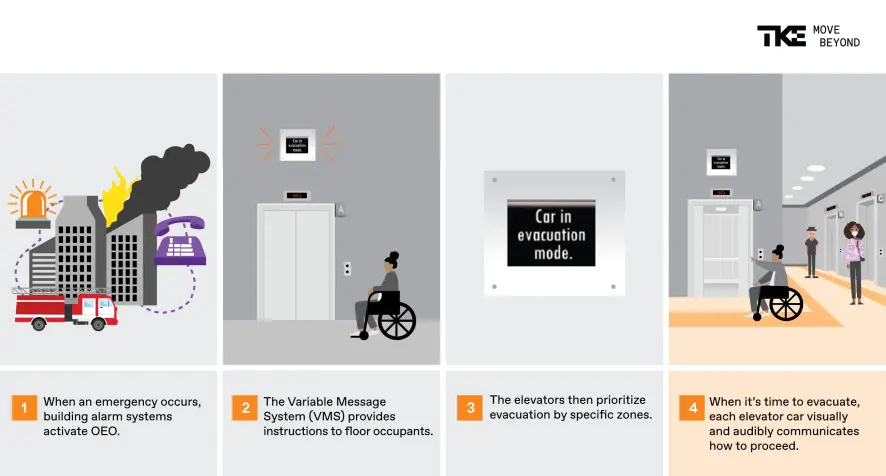In Case of Emergency, Use Stairs: Can Elevators Evolve to Address Emergency Situations?
How many times have you walked past an elevator and seen a sign that says, “in case of fire, use stairs” or, “in case of emergency, do not use elevator”? This signage coupled with the innumerable fire drills we’ve all been through have trained us to believe there is no fathomable way an elevator could be safe in an emergency. While most elevators should not be used in an emergency, an emergency-approved elevator exists and has caught the eye of several properties.
A good reason you may not have heard of or seen these special elevators is because we installed the first of them in 2019. Designed with strict regulations, Occupant Evacuation Elevators are meant to address the issues that come with not being able to access a building’s elevator in times of crisis. Yes, you read that right — these specific elevators can be used during an emergency because they are built uniquely for it.
So how do they function during a building-wide crisis? Let’s take a look.
How do Occupant Evacuation Elevators work?
Unlike the typical elevator, OEO applications are built with difficult situations in mind. Not only can they smoothly operate during an emergency, when combined with the use of stairwells, they make evacuations faster and more efficient. They have safeguards in place which can protect against heat, smoke and water to keep the hoistway and elevator lobby area safe. On top of all this, they also have backup power so they can still operate during a power outage.

During an emergency, the building’s alarm system activates the OEO elevators, which provide easy-to-follow, audible instructions for floor occupants. The elevators evacuate by floor, prioritizing the floors farthest from the discharge level. Using hall station screens with a Variable Message System (VMS), the elevator will communicate the its service status to the passengers in the floor lobby. When the elevator cab arrives at the passenger’s destination floor, it will visually and audibly communicate how to proceed for a successful and swift evacuation.
The idea for this type of elevator was proposed after thorough research was performed by the National Institute of Standards and Technology (NIST) after the 9/11 attacks. They saw a need for an alternative method to evacuate high-rise buildings and moved forward with OEO elevators. The elevators help to relieve panic and confusion during an emergency and speed up the evacuation process.
Michael Simmons, Senior Sales Representative at TK Elevator, stands by the technology and hopes to see it integrated into more buildings. When asked about the elevators, he had this to say: "Research indicates that it can take up to 2 hours and 11 minutes for a 50-story building to be evacuated via single set of stairs. Not only does an OEO remove the need for a third set of stairs for buildings over 420 feet, but they also provide a quick means of egress for occupants that may have difficulties with mobility."
Since these elevators are relatively new, they are not seen in many buildings across North America. TK Elevator’s top priority is safety, and by providing the technology for smoother evacuations, we hope to see these elevators implemented in many more buildings soon.
 United States
United States

